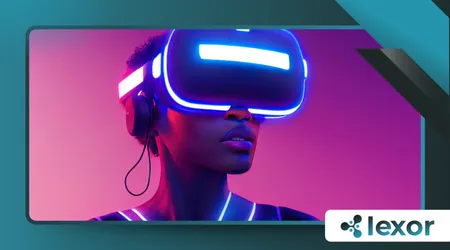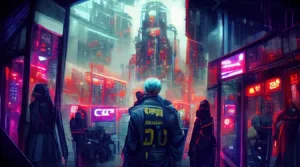Immersion in Extended Reality (XR): Metaverse and virtual worlds in early childhood education

The conversation around education is being radically reshaped by digital innovation. The concept of Immersion in Extended Reality (XR) encompassing Virtual Reality (VR).
Augmented Reality (AR), and Mixed Reality (MR) is no longer a distant futuristic vision but a present reality offering unprecedented potential for early childhood education.
This transformative shift allows young children to interact with complex concepts in a safe, engaging, and deeply intuitive manner.
For educators, the challenge lies in thoughtfully integrating these powerful tools to enhance, not replace, fundamental developmental learning.
The digital revolution offers a fertile ground for experiential learning.
Bridging the Physical and Digital Divide
Extended Reality creates unique learning environments that seamlessly blend the physical classroom with digital experiences.
Unlike passive screen time, these technologies encourage active participation, movement, and critical thinking from the very beginning.
The technology transports the learner, making abstract ideas tangible.
Consider the complexity of teaching about ecosystems to a five-year-old.
A virtual field trip to the Amazon rainforest, experienced through a VR headset, provides a level of sensory engagement unmatched by books or videos.
This active, multisensory approach solidifies memory and understanding.
The focus must remain on developmental appropriateness and pedagogical soundness.
++ Top 10 STEM toys for preschoolers in 2025
Metaverse and Virtual Worlds: New Sandboxes for Skills
Virtual worlds, often associated with the broader Metaverse, serve as new “sandboxes” where young children can safely practice essential social and cognitive skills.
These controlled digital spaces facilitate collaborative play and problem-solving among peers. Learning becomes an adventure, not a chore.
A prime example is a virtual world designed for constructive play, where children collaborate to build a virtual city using digital blocks.
They practice communication, negotiation, spatial reasoning, and collaborative design. This mirrors the real-world interactions necessary for success in a globalized society.
This approach offers an unparalleled opportunity for tailored, interest-driven learning pathways.

The Power of Spatial Learning
Early childhood is a critical period for developing spatial awareness and motor skills. XR environments are exceptionally suited for boosting these developmental milestones.
The digital interaction inherently requires movement and three-dimensional reasoning.
Imagine a child learning about gravity by virtually dropping objects of different weights in a zero-gravity environment.
They are directly manipulating variables, observing outcomes, and constructing knowledge—a powerful form of active experimentation. This kind of hands-on, or rather, “hands-in,” learning is revolutionary.
++ Virtual Field Trips for Preschool: Tools and Tips
The integration of educational technology demands careful ethical and psychological considerations.
Ethical and Responsible Integration
While the potential is enormous, adopting XR in early education must be grounded in responsibility.
Educators and developers must prioritize child safety, privacy, and developmentally appropriate screen time limits.
The technology should always be a tool to amplify learning, not a babysitter.
The American Academy of Pediatrics (AAP) and similar global bodies continually stress the importance of balancing digital engagement with unstructured play and human-to-human interaction.
A structured deployment plan is crucial.
++ How to Use Smart Boards in Kindergarten Activities
| XR Application Type | Early Childhood Skill Focus | Example of Educational Activity |
| Augmented Reality (AR) | Fine Motor & Literacy | AR app overlays letters on blocks; child traces lines. |
| Virtual Reality (VR) | Empathy & Cognitive Mapping | Virtual visit to a farm; child feeds and cares for animals. |
| Mixed Reality (MR) | Problem Solving & STEM | Child places virtual gears onto a physical table to make a digital machine work. |
A Call for Thoughtful Curation
The sheer volume of available digital content requires a deliberate and well-informed curation process by educators.
Not all immersive experiences are created equal or designed with pedagogical intent.
Choosing high-quality, educationally sound content is paramount for maximizing the benefits of Immersion in Extended Reality (XR).
Like a telescope opening up the universe, XR opens up worlds of learning otherwise inaccessible to young minds. It offers a window into the micro and macro, the historical and the abstract.
This technology is not about escaping reality but about broadening it.
According to a 2024 report by the market research firm Technavio, the global educational VR market is projected to grow significantly, indicating a strong institutional belief in this technology’s educational utility.
This economic trend reflects the growing pedagogical acceptance.
The Future Classroom is Already Here
The full impact of Immersion in Extended Reality (XR) is just beginning to unfold, promising a future where learning is inherently exploratory, personalized, and boundaryless.
We must embrace this technology with intelligence and care. It’s an imperative that we prepare young learners for a future steeped in digital fluency, ensuring they remain creators, not just consumers.
Will the next generation of innovators remember the static textbook, or the interactive virtual dinosaur they helped excavate?
The responsible integration of Immersion in Extended Reality (XR) will define the next decade of early learning.
This isn’t just about new gadgets; it’s about fundamentally rethinking how children interact with knowledge. The technology is simply a bridge to richer, more engaging comprehension.
Frequently Asked Questions
Is Extended Reality (XR) safe for young children’s developing eyes?
Responsible use is key. Most educators advocate for short, supervised sessions with age-appropriate content to prevent eye strain or motion sickness.
The technology is rapidly improving, with less intrusive hardware being developed specifically for younger users.
How does XR actually improve learning outcomes?
By providing a highly engaging, multisensory, and contextually rich learning environment, XR can dramatically increase retention and understanding.
It allows children to perform tasks and explore places that would be impossible, costly, or dangerous in the real world, turning passive information into active experience.
Will XR replace teachers in the early education classroom?
Absolutely not. XR is a powerful tool designed to augment the teacher’s capabilities, not replace them.
The teacher’s role remains central: providing guidance, facilitating social interaction, interpreting children’s discoveries, and nurturing emotional development. Human interaction is irreplaceable.
What is the difference between VR and AR in a school setting?
Virtual Reality (VR) typically involves a headset that completely immerses the user in a digital world, blocking out the real one.
Augmented Reality (AR), often used on tablets or smartphones, overlays digital content onto the user’s view of the real world, enhancing their immediate environment with digital information.
